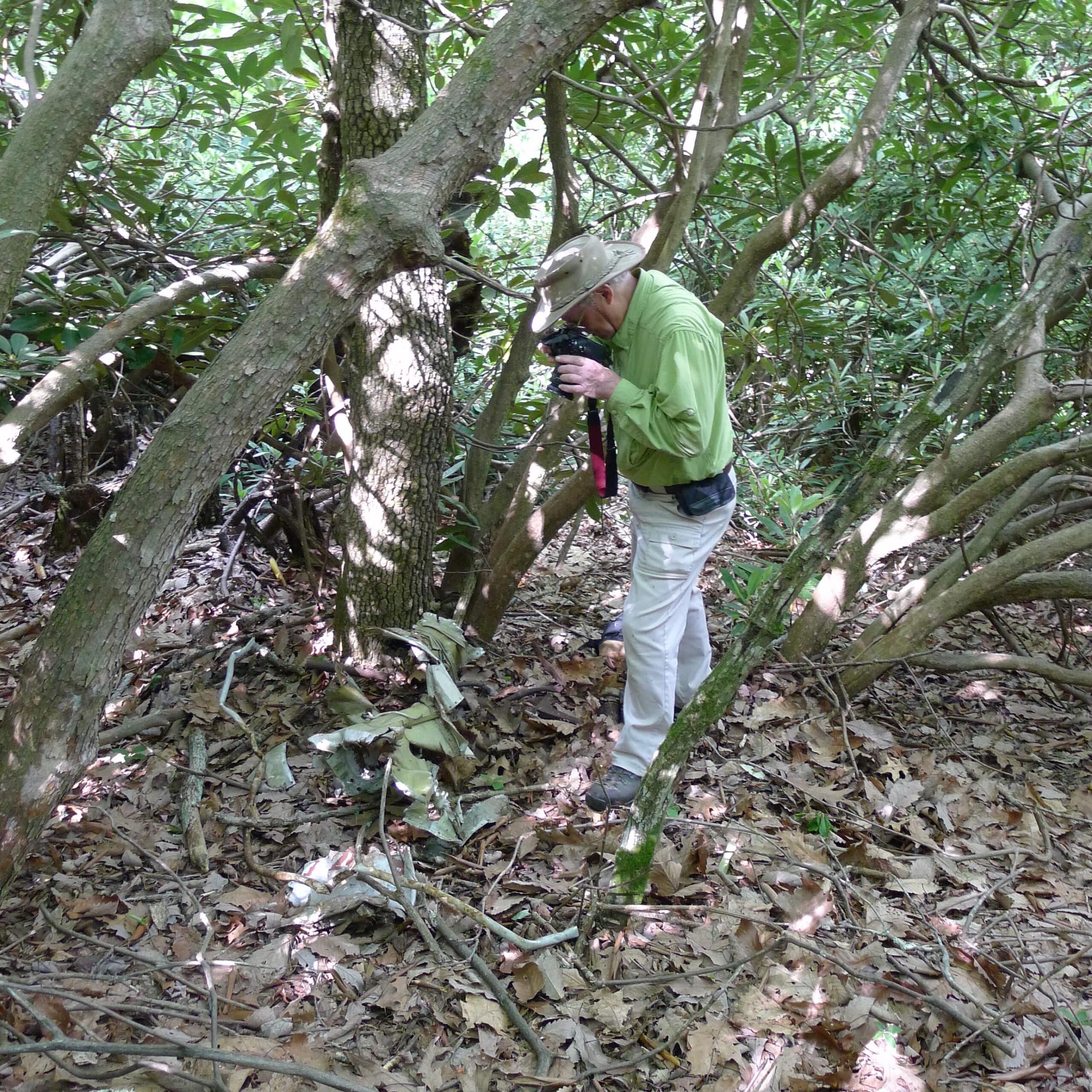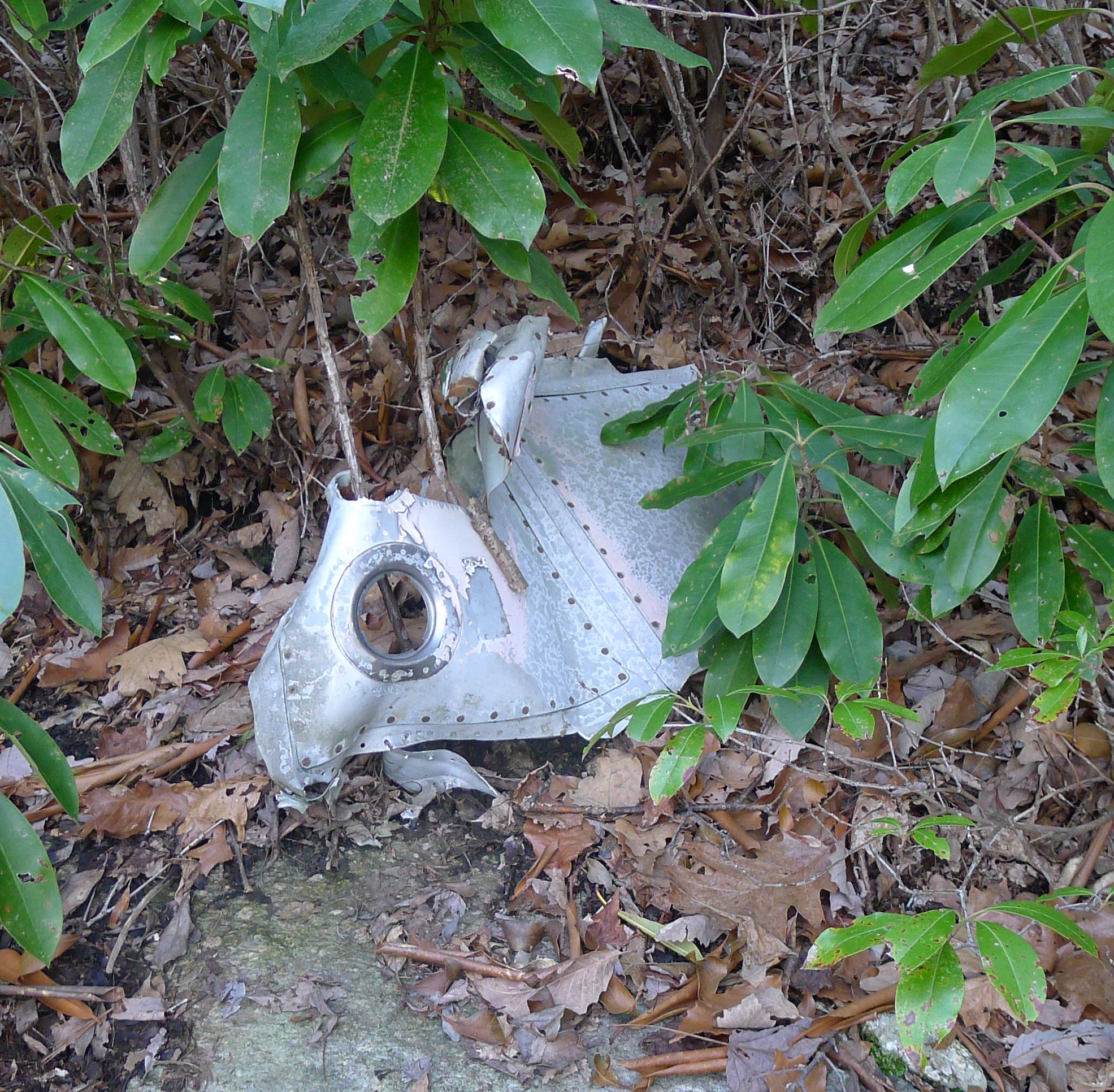By Alan Cameron
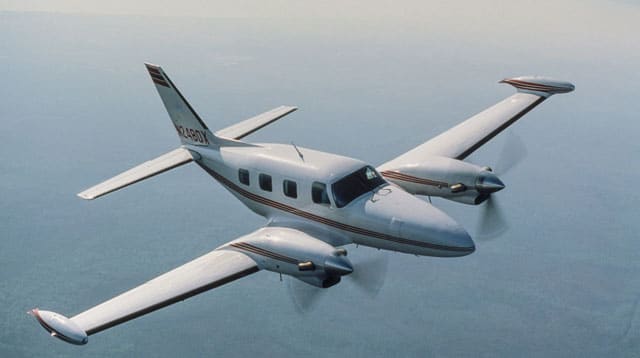
In March of 2015 I was bushwhacking across a slope in DuPont State Recreational Forest (DSRF) looking for Green Salamander habitat when I started to find various metallic objects spread across about two acres of slope. They had obviously been there for some time. One of the pieces had a data plate indicating that it was a hydraulic brake system reservoir for an aircraft landing system (figure 1). Many of the other pieces were also obviously from an aircraft, including small sections of wings.
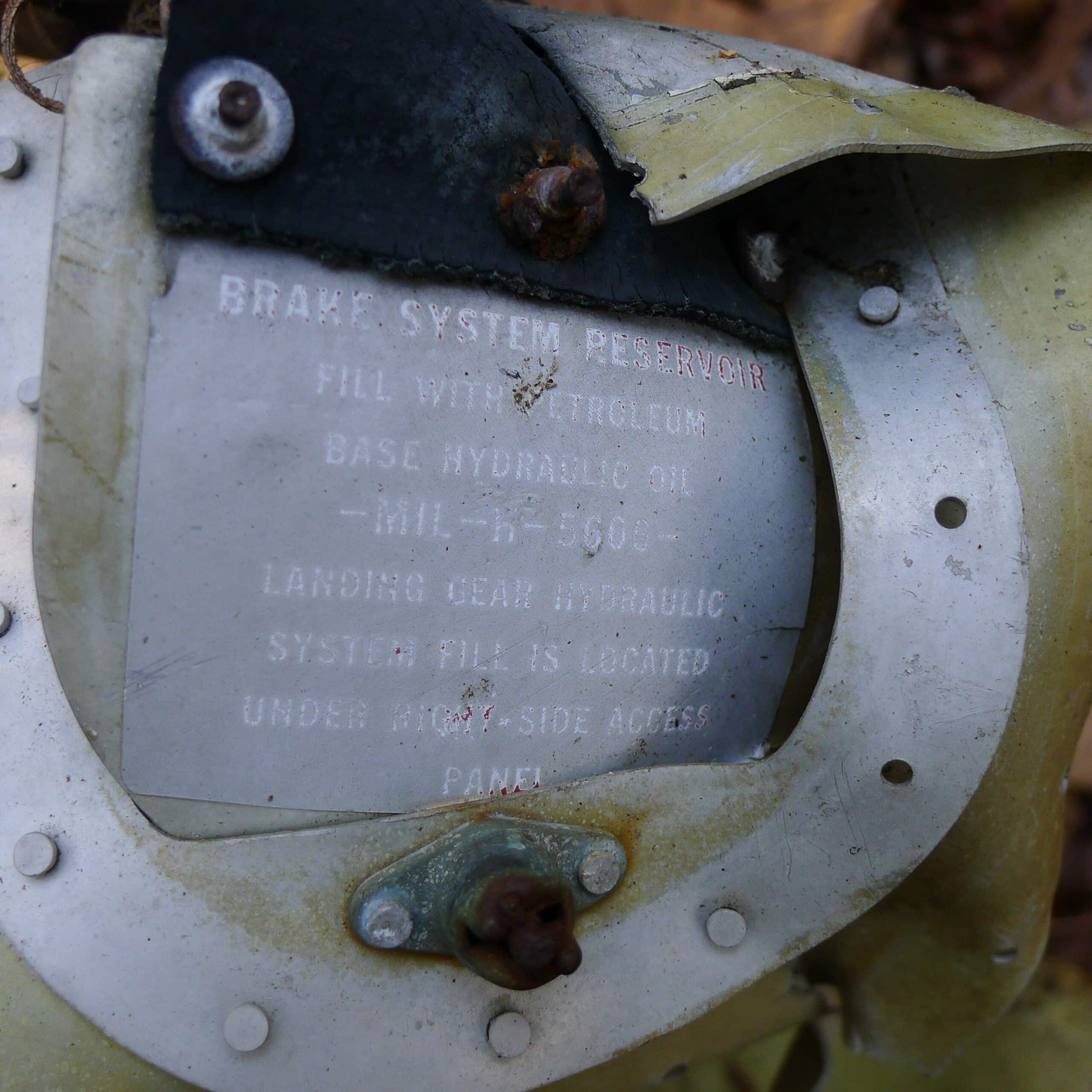
Figure 1
Even though I had my GPS unit with me I did not bother to map the site as I assumed that the crash was already well known. But later when I queried DSRF staff, no one had any recollection of the crash, which is probably because the property was owned by the DuPont Corporation at the time of the crash. A check with the Hendersonville Airport Manager and the Valley Hill Fire Department revealed that they had no information about an aircraft crash in the area now known as DSRF.
Some time later I took Kent Wilcox to the site. One of the pieces was an aircraft fuel pump. Kent photographed its data plate (figures 2 and 3) and subsequently contacted the manufacturer. They said that the pump was made specifically for Piper Cheyennes (PA-31T)which is a twin-engine turboprop with a top speed of 360 mph (figure 4. The first production model flew in 1979. Deliveries began on June 30, 1980. It could be configured to carry up to nine passengers.
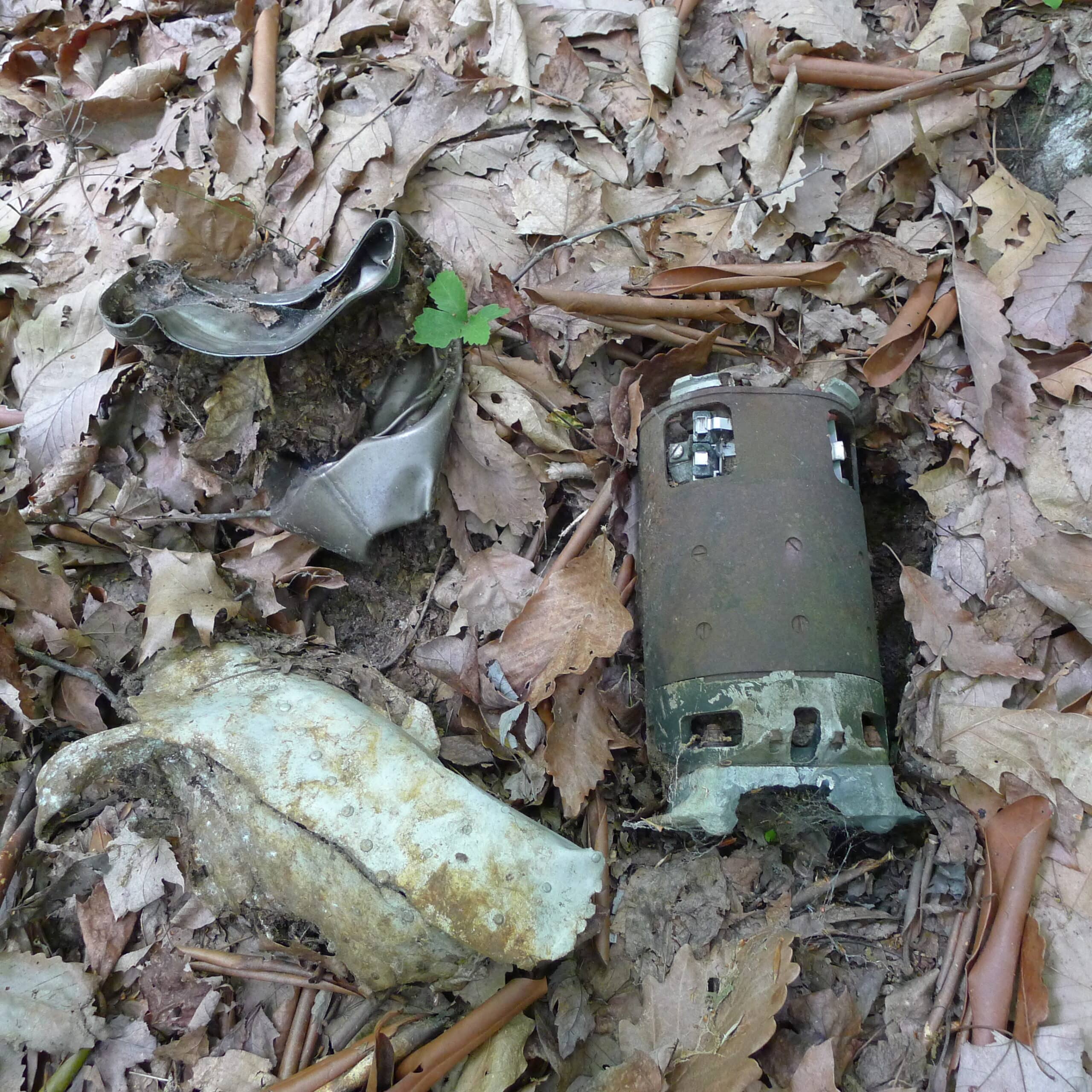

Another piece was a circuit board from a Loran radio unit that was dated to about 1984 (figure 5). With that information Kent went to the Henderson County Library and scanned the microfiche of the Henderson Times-News for 1985 and BINGO! Headlines on the August 24 edition were “Five killed in plane crash.” The newspaper reported that locals in the area had heard the crash and had seen a fireball at about 10:15 PM on August 23. They alerted the Valley Hill Fire Department which assembled a rescue team which hiked into the forest in the dark. After a 90 minute hike up steep slopes overgrown with a tangle of rhododendron and mountain laurel, they found the wreckage. There were no survivors. Because it was midnight and the wreckage was strewn over a wide area they decided to wait until daylight to begin recovery efforts.
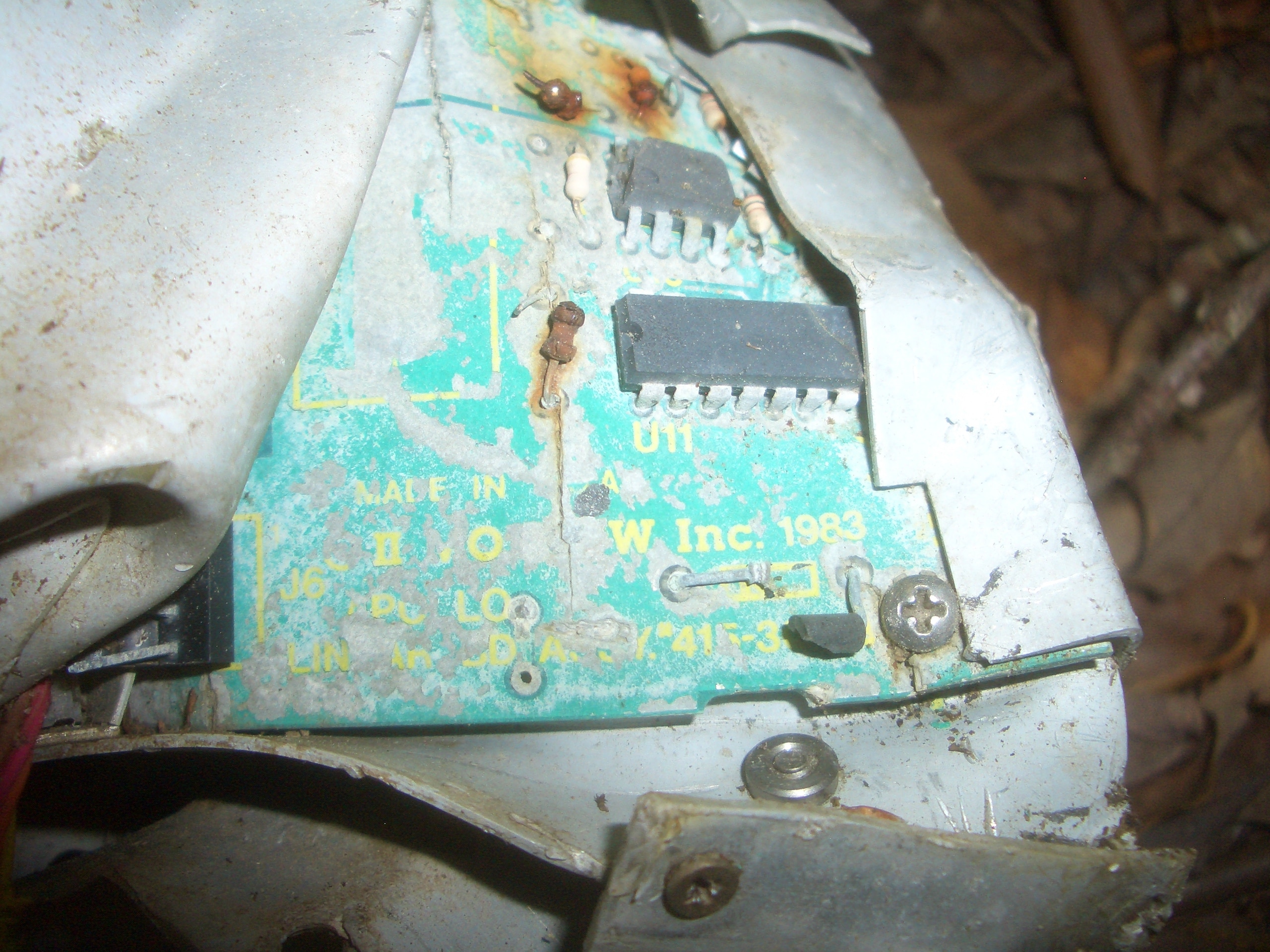
Figure 5
A follow-up report in the newspaper reported that the occupants were the pilot and four passengers (three men and one young woman) who had been attending a cattle show in Louisville, KY. The impact occurred when the plane was on final approach into Greenville to drop the female passenger off before going on to Florida where the men lived. All were killed on impact. The human remains and most of the wreckage were removed. The pieces I had found were further down the slope and were missed by the clean-up crew.
Transponder data from the aircraft picked up at Greenville Airport showed that the aircraft was flying under visual flight rules. It is possible that weather may have been a factor in the crash as the National Weather Service at Asheville Airport reported that the weather at the time of the crash was cloudy, with fog, light rain, and poor visibility.
Please note that the NC Forest Service prohibits removal of any artifacts from DSRF without a permit. Visitors are encouraged to show respect for all historical sites.
